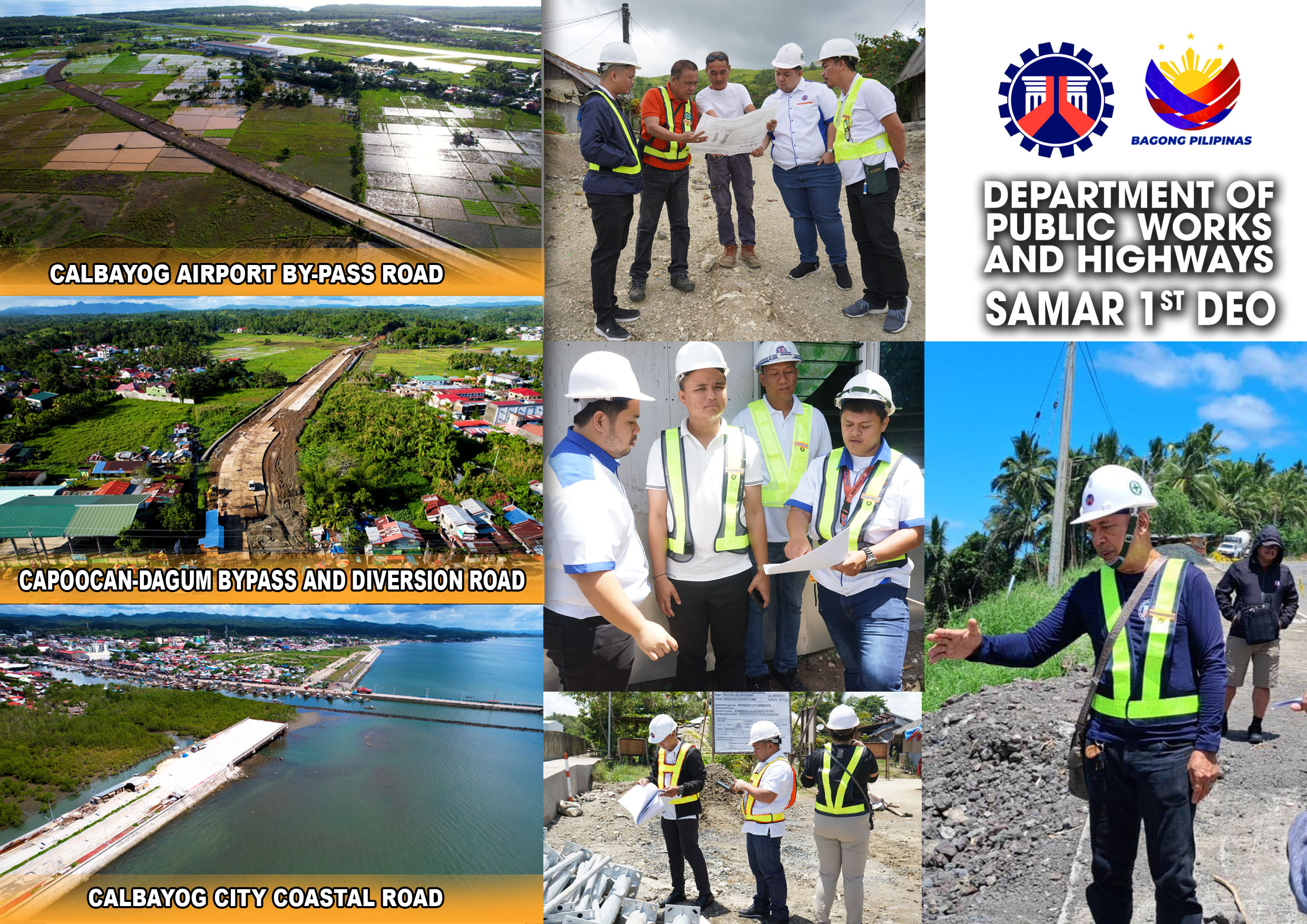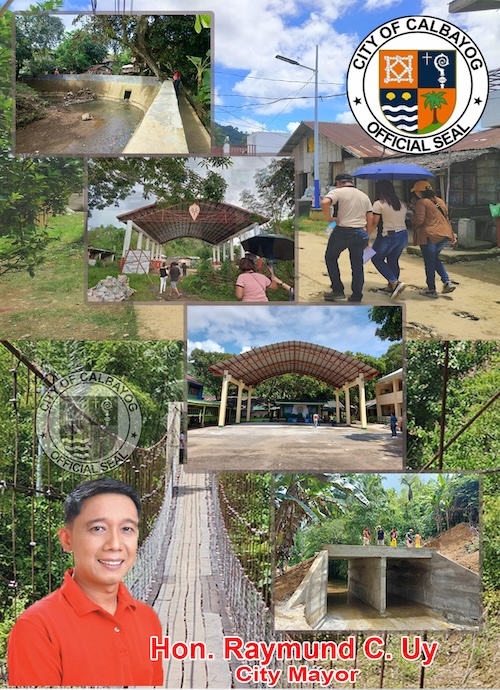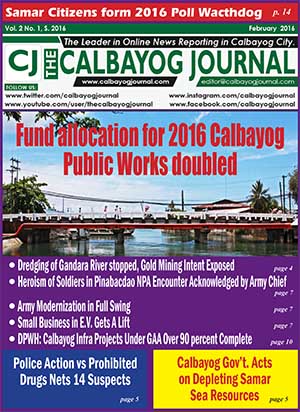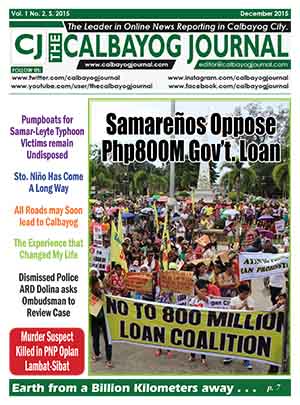By: Elmer Recuerdo
Photos: Ms. Marian C. Libanan & Elmer Recuerdo
Photos: Ms. Marian C. Libanan & Elmer Recuerdo

MASLOG, Eastern Samar – Alberto Nuguit intently listens as the politicians talk at the stage about the road project that will connect this town to the adjacent municipality of Jipapad.
“They look sincere but I hope this time there will really be a functional road,” he whispers in his comment. “We had been promised many times over in the past but, look, we remain isolated from our neighboring towns.”
Nuguit, 49, is the barangay captain of Tugas, a farming village that nestles between Maslog and Jipapad towns which happen to be the two most economically depressed municipalities in Eastern Samar. From his village to the town proper, the most viable means of transportation is kuliglig, which is run by a tractor machine where fare is P50 per head for the five-kilometer ride.
“It is difficult and expensive to bring our crops to the market,” adds Federico Bergonio, the barangay captain of San Roque, the next village which is three kilometers farther from the town center. “We pay P100 per sack to bring our crops to Tugas where transportation to the town is available.”
Maslog, a fifth-class municipality with a population of 5,463 in the 2020 Census, has oftentimes been referred to, albeit in jest, as Samar Island’s last town – always the last to receive services from the national government and the last to be connected to a national road.
In going to Maslog, the easiest access is through a four-hour ride on a samban, a motorized banca without outriggers, from Dolores town traversing the Dolores river. There is an unfinished road that was started over 15 years ago from Carolina junction of Dolores to Maslog but its sorry state makes the 34-km stretch into a bumpy two-hour drive.
Despite its distance and a relatively small voting population – 3,535 registered voters in the 2022 local and national elections – Maslog has been in the radar of politicians who capitalizes on a pro-poor agenda. Maslog has been visited by at least two previous presidential aspirants, Joseph Estrada in 1998 and Leni Robredo in 2022.
“They look sincere but I hope this time there will really be a functional road,” he whispers in his comment. “We had been promised many times over in the past but, look, we remain isolated from our neighboring towns.”
Nuguit, 49, is the barangay captain of Tugas, a farming village that nestles between Maslog and Jipapad towns which happen to be the two most economically depressed municipalities in Eastern Samar. From his village to the town proper, the most viable means of transportation is kuliglig, which is run by a tractor machine where fare is P50 per head for the five-kilometer ride.
“It is difficult and expensive to bring our crops to the market,” adds Federico Bergonio, the barangay captain of San Roque, the next village which is three kilometers farther from the town center. “We pay P100 per sack to bring our crops to Tugas where transportation to the town is available.”
Maslog, a fifth-class municipality with a population of 5,463 in the 2020 Census, has oftentimes been referred to, albeit in jest, as Samar Island’s last town – always the last to receive services from the national government and the last to be connected to a national road.
In going to Maslog, the easiest access is through a four-hour ride on a samban, a motorized banca without outriggers, from Dolores town traversing the Dolores river. There is an unfinished road that was started over 15 years ago from Carolina junction of Dolores to Maslog but its sorry state makes the 34-km stretch into a bumpy two-hour drive.
Despite its distance and a relatively small voting population – 3,535 registered voters in the 2022 local and national elections – Maslog has been in the radar of politicians who capitalizes on a pro-poor agenda. Maslog has been visited by at least two previous presidential aspirants, Joseph Estrada in 1998 and Leni Robredo in 2022.

“If only the bridges to Dolores were completed, we could bring our emergency patients to the hospital despite the bad road even during rainy days,” says Nuguit.
Nuguit is referring to Hinolaso Bridge 1, Hinolaso Bridge 2, Hinolaso Bridge 3, and Villahermosa Bridge that were constructed with a total project cost of P212.48 million. The bridges could not be used, however, because there are no approaches leaving the bridges hanging in the air. The bridges are too high as they were designed based on the highest flood that occurred in the last 25 years.
The bridge projects have two phases: the construction of substructures amounting to P97.83 million and the construction of the superstructures with road components of 2.5 kilometers amounting to P114.64 million funded under the Payapa at Masaganang Pamayanan (PAMANA) program.
PAMANA is the national government’s convergence program that extends development interventions to isolated, hard-to-reach and conflict-affected communities, ensuring that they are not left behind.
The project contractor, at the onset of the bridge construction in 2018, put up timber bridges made of coconut lumber for the vehicles and public to pass but there are times when these are not passable as they are prone to flooding. The temporary bridges also need to be rehabilitated.
When it rains hard for a few days, water in Dolores river would swell submerging the bridges and flooding communities along the river bank thus boating through it using samban is dangerous.
Engineer Margarita Junia, former district engineer in Eastern Samar of the Department of Public Works and Highways and now the assistant regional director of the agency, did an ocular inspection last year and promised to complete within that year the construction of the four bridges including the provision of embankment and construction of the approaches. It did not happen, though.
Nuguit is referring to Hinolaso Bridge 1, Hinolaso Bridge 2, Hinolaso Bridge 3, and Villahermosa Bridge that were constructed with a total project cost of P212.48 million. The bridges could not be used, however, because there are no approaches leaving the bridges hanging in the air. The bridges are too high as they were designed based on the highest flood that occurred in the last 25 years.
The bridge projects have two phases: the construction of substructures amounting to P97.83 million and the construction of the superstructures with road components of 2.5 kilometers amounting to P114.64 million funded under the Payapa at Masaganang Pamayanan (PAMANA) program.
PAMANA is the national government’s convergence program that extends development interventions to isolated, hard-to-reach and conflict-affected communities, ensuring that they are not left behind.
The project contractor, at the onset of the bridge construction in 2018, put up timber bridges made of coconut lumber for the vehicles and public to pass but there are times when these are not passable as they are prone to flooding. The temporary bridges also need to be rehabilitated.
When it rains hard for a few days, water in Dolores river would swell submerging the bridges and flooding communities along the river bank thus boating through it using samban is dangerous.
Engineer Margarita Junia, former district engineer in Eastern Samar of the Department of Public Works and Highways and now the assistant regional director of the agency, did an ocular inspection last year and promised to complete within that year the construction of the four bridges including the provision of embankment and construction of the approaches. It did not happen, though.
New hopes under the administration
Last Friday, 26 May, 4Ps Partylist Rep and House Minority Floor Leader Marcelino Libanan, led the groundbreaking ceremony for the construction and opening of the Maslog-Jipapad Road Project.
Last Friday, 26 May, 4Ps Partylist Rep and House Minority Floor Leader Marcelino Libanan, led the groundbreaking ceremony for the construction and opening of the Maslog-Jipapad Road Project.

The DPWH regional office, which is the implementing unit, awarded a P100-million contract on Thursday for the 1.5735 lane kilometer road concreting, which is a portion of the road section of 21-kilometers distance from Maslog to Jipapad.
Libanan promised to work hard for the allocation of additional funds to complete the funding of the whole project within the term of the present administration.
Maslog Mayor Heracleo Santiago said he is confident that road projects that will finally connect his town to the national highway will be realized under the present administration. He said these projects are already long overdue as he expressed his optimism that this will bring development to his town.
“There may be few voters here but development must also be done here if only to have peace and order in our province,” Santiago said.
Santiago said that for some time, the interior and contiguous towns of Maslog, Jipapad, San Jose de Buan (Samar) and Las Navas (Northern Samar) formed the mass base of the New People’s Army.
During the Community Support Program of the Task Force to End Local Communist Armed Conflict in three villages of Maslog, the issues of lack of access to education and other basic services came out as the primary reason why the people supported the communist movement.
“There was a great distance between the government and the people,” he said. “These infrastructure projects, especially the roads, will bring the government nearer to the people. They will not only bring development, but also peace and order for the whole Eastern Samar province.”
Libanan promised to work hard for the allocation of additional funds to complete the funding of the whole project within the term of the present administration.
Maslog Mayor Heracleo Santiago said he is confident that road projects that will finally connect his town to the national highway will be realized under the present administration. He said these projects are already long overdue as he expressed his optimism that this will bring development to his town.
“There may be few voters here but development must also be done here if only to have peace and order in our province,” Santiago said.
Santiago said that for some time, the interior and contiguous towns of Maslog, Jipapad, San Jose de Buan (Samar) and Las Navas (Northern Samar) formed the mass base of the New People’s Army.
During the Community Support Program of the Task Force to End Local Communist Armed Conflict in three villages of Maslog, the issues of lack of access to education and other basic services came out as the primary reason why the people supported the communist movement.
“There was a great distance between the government and the people,” he said. “These infrastructure projects, especially the roads, will bring the government nearer to the people. They will not only bring development, but also peace and order for the whole Eastern Samar province.”
Complete road network
Libanan, who is a staunch political ally of President Ferdinand Marcos Jr., said the president has personally mandated him to look into the development projects in the whole Samar island to ensure the provision of a complete road network in the island.
In February, Libanan also led the groundbreaking and capsule-laying ceremony for the construction of a road from the junction of the national highway in Brgy. Carolina to Maslog road (barangays Magsaysay-Magongbong-Gap-ang) section; and the concreting of Dolores-Maslog road.
Libanan, who is a staunch political ally of President Ferdinand Marcos Jr., said the president has personally mandated him to look into the development projects in the whole Samar island to ensure the provision of a complete road network in the island.
In February, Libanan also led the groundbreaking and capsule-laying ceremony for the construction of a road from the junction of the national highway in Brgy. Carolina to Maslog road (barangays Magsaysay-Magongbong-Gap-ang) section; and the concreting of Dolores-Maslog road.

The 9.08 kilometers junction national road, which started its construction on January 4, 2023, has a budget allocation of P238.5-M while the concreting of the 2.60 kilometers Dolores-Maslog road project, which started last December 21, 2022, has a project cost amounting to P95.4-M.
DPWH Eastern Samar District Engineer Alvin Ignacio said that out of the 34.3-km road from Junction Carolina to Maslog, 29.73 kms of it is completed but most of it needs rehabilitation.
Libanan said that after the Maslog-Jipapad road, the government also plans to construct a road from Jipapad to Las Navas in Northern Samar that will cut travel time from Manila to Eastern Samar by over four hours.
“The bigger plan is to make the Las Navas-Jipapad-Maslog-Dolores road network into a national highway to lessen the travel time from Manila and hasten the transport of goods to and from the province,” he said.
“I hope that in 5-10 years we will see the rise of more investments to come that will improve the condition of the people,” he added.(CJ/ER/jmm – May 30, 2023)
DPWH Eastern Samar District Engineer Alvin Ignacio said that out of the 34.3-km road from Junction Carolina to Maslog, 29.73 kms of it is completed but most of it needs rehabilitation.
Libanan said that after the Maslog-Jipapad road, the government also plans to construct a road from Jipapad to Las Navas in Northern Samar that will cut travel time from Manila to Eastern Samar by over four hours.
“The bigger plan is to make the Las Navas-Jipapad-Maslog-Dolores road network into a national highway to lessen the travel time from Manila and hasten the transport of goods to and from the province,” he said.
“I hope that in 5-10 years we will see the rise of more investments to come that will improve the condition of the people,” he added.(CJ/ER/jmm – May 30, 2023)





















